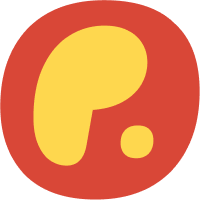What are the differences between a product and a brand?
- Catherine Warrilow
- Feb 7, 2024
- 3 min read
Updated: Jun 19
Good question.
There are three fundamental differences that distinguish a product from a brand.
The experience. A brand focusses delivering their product to a customer wrapped up in a memorable experience. Before you even purchase, you're imagining how you'll feel once you have that product in your hands, or you are at that destination, in that hotel or restaurant. A product and a brand both solve a need, but a brand does it in a way that creates anticipation, excitement, increased value and affinity with the brand. This means that you're more likely to buy this brand versus the product that is also available. And you're likely to spend more. You're also less likely to seek out that product because there is no marketing in place - whereas a brand strategy always includes content, often driven by other users, a brand identity that really stands out against other products, and a tone of voice that appeals and speaks to you. A great example of this would be something as simple as the laptop bag you choose when you travel. If you choose the brand that other successful business people use, are seen using when they're travelling on their social channels, is marketed as being designed for the busy entrepreneur, working on the go, then you're far more likely to buy that brand than to search for something on Amazon with a brand name that you don't recognise, that fits your budget.
Brand personality and tone of voice Products rarely consider how they talk to a customer, what language they use and how text and copy can make people feel. Whereas a brand has a very defined tone of voice that is engaging, memorable and drives loyalty. Airlines are a great example. RyanAir and EasyJet have defined themselves as being straightforward with no frills. Their tone is focussed on simple, transactional messages. We'll get you from A to B for a great price. Whereas airlines like KLM focus heavily on the experience, the aspirational element of travel and the connection between you and the destination or activity you're travelling for. Without a clearly defined tone of voice, brands struggle to engage customers and create common values and beliefs. People buy into certain brands because they share similar objectives. When we're eating out for example, brand personality helps us to decide if we want to go to the restaurant that makes you feel like a VIP, eat in an environment that's really relaxing, or squeeze in good quality fast-food. Each of the three have a very different way of talking to their customers based on the problem they solve and the personality traits they're trying to connect you with.
Community Brand communities are more valuable than they've ever been, and if a brand is able to add further value to customers outside the purchasing journey, and connect them with other advocates, then loyalty grows and grows.
Social media has made it incredibly easy to create brand communities - that could be
anything from a Facebook group to a loyalty driven membership to something as simple as
UGC shared with a hashtag on Instagram or TikTok.
Encouraging people to connect with a brand often comes down to bragging rights. This is especially true when people visit attractions and experiences, especially when they offer something particularly Instagrammable. Thames Rockets, the London Thames speedboat rides, the Bubble Planet experience and The Story Museum in Oxford are really good example of this and they've created a need in the customer's mind to share their own
experiences.
Finally, brands use their fans and community to lobby change. That might be raising
awareness of more sustainable ways to travel, reducing food waste in hospitality or seeing tourist destinations in more localised ways. These type of causes can gain huge momentum and publicity if a brand can leverage customer support.
If you want a really quick and easy way to remember the three differences between a product and brand, check out the broad bean marketing technique on TikTok.
This article is a practical guide for anyone wanting to understand the key differences between a product and a brand—especially relevant for marketers, tourism businesses, and founders looking to grow audience trust and loyalty.
PS: If you’re stuck in the product zone and wondering how to build a brand that people choose, talk about, and come back to - this is your sign to start. I help businesses in travel, tourism and experiences make that leap with clever brand strategy, compelling tone of voice and a dose of community magic.
Want to turn a functional product into a must-have brand? Let’s talk.
For more no-fluff marketing insights that demystify brand strategy, check out my TikTok where I explain techniques like the broad bean brand method, and follow me on LinkedIn for weekly tips and inspiration that travel brands actually use.






Comments